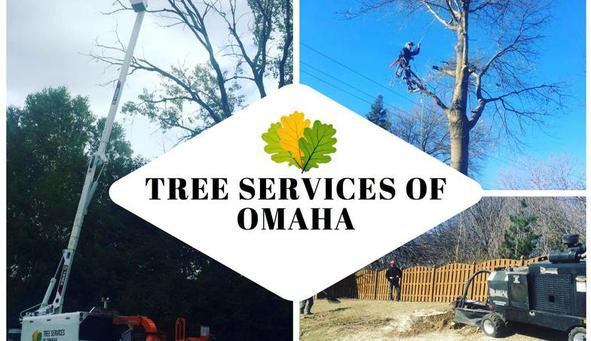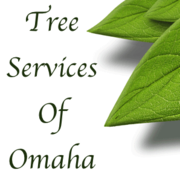Tree Root Health
by David Steg on 10/20/14
Healthy Roots and Healthy Trees
Quick Facts...

Figure 1: Area root distribution vs. crown distribution.
Most tree roots are located in the top 6 to 24 inches of the soil and occupy an area two to four times the diameter of the tree crown.
Roots obtain water, oxygen nd minerals from soil. They do not grow toward anything or in any particular direction.
Soil compaction, change in soil depth and improper watering can injure roots, increasing stress and susceptibility to disease and insects.
To avoid root disease, maintain a healthy, vigorous environment around a tree. Once a root system is severely affected, the tree usually must be removed.
The root system of a tree performs many vital functions. In winter, it is a store-house for essential food reserves needed by the tree to produce spring foliage. Roots absorb and transport water and minerals from the soil to the rest of the tree. Roots also anchor the portion of the tree above ground. It is important to keep the portion above ground healthy to ensure an adequate food supply for the roots to continue their important functions.
Where Roots Grow

Figure 2: Tree wells cannot compensate for the addition of soil over tree roots.
Tree root systems consist of large perennial roots and smaller, short-lived feeder roots. The large, woody tree roots and their primary branches increase in size and grow horizontally. They are predominantly located in the top 6 to 24 inches of the soil and occasionally can grow deeper 3 to 7 feet if soil conditions allow. Root functions include water and mineral conduction, food and water storage, and anchorage.
In contrast, feeder roots, although averaging only 1/16 inch in diameter, constitute the major portion of the root system's surface area. These smaller roots grow outward and predominantly upward from the large roots near the soil surface, where minerals, water and oxygen are relatively abundant. The major function of feeder roots is the absorption of water and minerals. Under normal conditions, feeder roots die and are replaced on a regular basis.
Large roots and small feeder roots occupy a large area under ground. Typically, the root system of a tree extends outward past the dripline, two to four times the diameter of the average tree's crown (Figure 1).

Figure 3: Root destruction, soil removal and soil compaction from construction equipment.

Figure 4: Trenching can severely injure a tree. Instead, auger under roots.
Why Roots Grow Where They Do
Roots grow where water, minerals and oxygen are found in the soil and allow root growth. Roots need some water and oxygen but if soils are saturated with water, most roots will die. Because oxygen is usually located in the upper surface layer of soil, the largest concentration of feeder roots exists in this zone.
Other factors that determine root growth include soil compaction (reduction in air pockets resulting from soil particles being packed together) and soil temperature. In general, as the depth increases, soil compaction increases, while the availability of minerals, oxygen and soil temperature all decrease. In some instances, hard, compacted soil (hardpans) can occur near the surface, which restricts root growth.
Causes of Root Injury and Disease
There are many ways to injure tree roots and stress trees. Some injuries are unintentional and cannot be avoided. However, most root damage can be avoided with some care.
One of the biggest killers of urban trees is use of heavy clay subsoils instead of topsoil and soil compaction. Heavy clays and soil compaction restricts water and oxygen uptake by roots, and is associated with use of deep sub soils as fill for landscaping and compaction from construction of roads, parking lots, and from foot traffic, construction machinery, livestock, poor soil preparation, and a host of other factors.
Changes in soil depth around trees can also cause injury to root systems. The addition of only 4 to 6 inches of soil over an existing root system drastically reduces the amount of oxygen and water available to the roots (Figure 2). The opposite issue of removal of soil around an existing tree can expose and injure roots, change the soil conditions where roots grow, and reduce water availability (Figure 3).
Other causes of root problems include over- and underwatering, improper fertilization, and competition between roots. Overwatering causes the soil pore (air) spaces to fill with water and restrict oxygen uptake. Underwatering does not provide sufficient water for proper root development. Overfertilization can injure or kill the roots, while underfertilization results in a lack of the minerals essential to maintain a healthy tree. Competition for water and minerals between tree roots, bushes, grass and flowers can also stress trees. Trees can be stressed from root damage by routine soil preparation in the tree’s root zone for flower planting.
Other practices that increase root injury and disease susceptibility are: improper use of herbicides, deicing salts and other chemicals; wounding through digging and trenching (Figure 4); and adding deep mulch (over 6 inches), plastic or pavement that restricts or suffocates roots. After a tree is established, anything that changes the soil condition or the oxygen and water supply can be extremely detrimental.
Types of Root Diseases
The two basic types of fungi that cause root diseases are those that kill feeder roots and those that cause decay in the large, woody roots. Many fungi occur on small feeder roots. The more common organisms are species of Phytophthora, Pythium andFusarium. These break down the feeder roots and reduce the tree's mineral- and water-absorbing capability. Fungi that attack large, woody roots suppress growth, decay food-transporting cells, reduce food storage and reduce structural support for the tree.
Root Disease Signs and Symptoms

Figure 5: Yellow, chlorotic foliage from root disease.

Figure 6: Top to bottom: healthy feeder root, dead feeder root, and large, perennial root.
Typical symptoms associated with root diseases often are confused with mineral deficiencies because high numbers of dead roots reduce water and mineral uptake. Symptoms of root disease include small, yellow, chlorotic foliage (Figure 5); reduced growth; scorch; tufted leaves at the end of branches; and branch dieback. Fungal fruiting bodies (mushrooms or conks) at the base of the tree, as well as white fungal growth under the bark, also indicate root disease. Symptoms of root problems from construction damage or other detrimental activities may appear one to several years after the damage occurred.
Direct examination can verify a disease. Carefully excavate roots by removing a small patch of the bark. A brown coloration beneath the bark indicates a dead root, while a healthy root usually appears white or light-colored (Figure 6).
Control and Prevention
The most effective way to reduce the possibility of root injury and disease is to keep the tree healthy and vigorous. A healthy root environment consists of adequate growing space for the root system, well-conditioned soil 16 inches to 24 inches deep, and sufficient water and oxygen. To check the water and soil condition of the root environment, dig a hole outside the dripline of the tree and determine if the soil is dry, wet or compacted. If you can’t get the shovel in the ground, the soil is dry. Soil moisture is adequate if the soil can be madeinto a ball with little pressure. Long, deep watering over the entire root system with time for the soil to dry between watering is better for trees than frequent light watering. Watering once a month during a long, dry winter also is helpful.
Avoid any practice that injures the roots. This includes: soil compaction, soil depth changes, mechanical injury, and improper watering and fertilization techniques. However, if these practices cannot be avoided, try to minimize damage.
To minimize soil compaction, remove compacted soil and replace it with noncompacted soil. Provide adequate drainage before planting. Use 2 to 3 inches of organic mulch (peat moss, wood chips, tree bark) around the base of a tree to improve soil aeration and water availability. Adding new mulch every three years or so will be needed as the mulch decays and improves the soil structure.
Avoid fertilization damage by applying nitrogen fertilizer to established trees immediately after spring leaf expansion, not in the late summer and fall.
Once a tree is infected, it is difficult to control a root disease. If only a few roots are infected, try to restore the tree's health or at least delay disease progression. Since the fungus probably entered the tree due to some stress or injury, eliminate the stress and restore the tree's vigor by proper amount of water year round.
If the root system is severely damaged, tree removal is usually recommended. A tree with a structurally weakened root system can fall over during wind storms. Before replanting in the same area following death, remove as much of the dead stump as possible.



